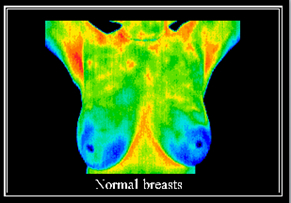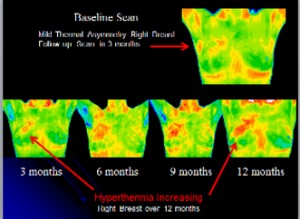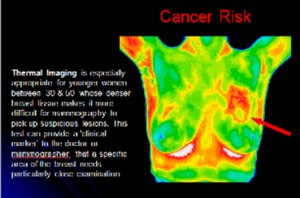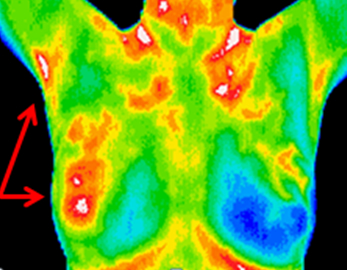Breast Cancer Risk

- Symmetric (same on both sides) breast patterns and temperatures
- No neovascularity (No new blood vessels) pattern
- No change in temperature differentials over time
- No focal points of heat (No hyperthermia)
- Symmetrical axillary (lymph nodes under the arms) temperatures

- Asymmetric (different on each side) breast pattern in right upper breast
- Asymmetric Hyperthermia (too much heat) Right breast > Left
- Increasing asymmetric pattern and hyperthermia over time (every 3 months)
- Axillary (lymph nodes under the arms) temperatures stable for now
(early disease process)

- Asymmetric (different on each side) breast pattern in left upper breast
- Hypothermic (cold , green color) round area surrounded by hyperthermia (hot, red color)
- Neovascularity (new blood vessel formation) surrounding green oval mass left upper breast
- Axillary (lymph nodes under the arms) temperatures stable for now (metastasis less likely)

- Asymmetric (different on each side) lymph nodes hyperthermic
(too much heat) R > L - Hyperthermia with focal points of heat in right breast
- Hyperthermia right breast > left breast
